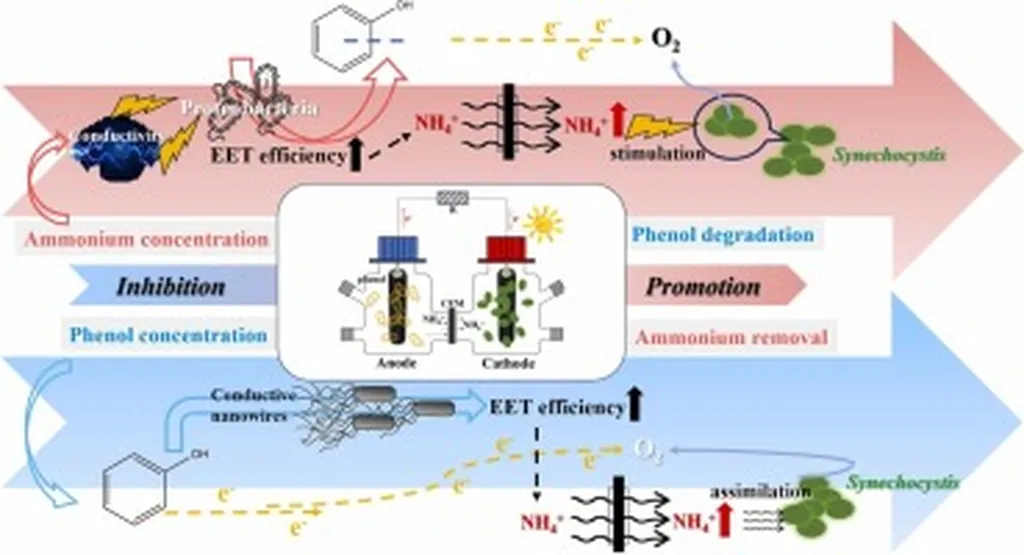In the intricate world of microbial ecosystems, a new study has shed light on the delicate balance of coexistence and competition, with potential implications for agriculture and bioremediation. Researchers from Kyushu University have uncovered how two phenol-degrading bacteria, Cupriavidus sp. strain P-10 and Comamonas thiooxydans strain R2, manage to coexist despite competing for the same resource. This finding, published in *Applied Microbiology and Biotechnology*, challenges traditional views on competitive exclusion and opens new avenues for understanding and harnessing microbial communities in agricultural and environmental applications.
The study, led by Kenshi Suzuki from the Laboratory for Synthetic Biology at Kyushu University, employed a chemostat culture—a controlled environment where nutrients are continuously supplied—to investigate the dynamics between the two bacterial strains. Using quantitative PCR (qPCR), the team observed that both strains actively transcribed genes involved in phenol degradation, indicating that each strain was metabolizing phenol individually. However, mathematical simulations revealed a paradox: under steady conditions, competitive exclusion should occur, with one strain outcompeting the other.
“The simulations showed that strain P-10 would outcompete strain R2 if it occupied more than 64% of the phenol,” Suzuki explained. “This suggests that coexistence is not possible under stable conditions. However, our experiments showed that the two strains could indeed coexist.”
The key to this coexistence lies in the spatiotemporal heterogeneity of phenol concentration within the chemostat. The phenol concentration fluctuated over short periods, creating a dynamic environment where both strains could find niches to thrive. This fluctuation in the sharing ratio of the limiting substrate—phenol—enabled the stable coexistence of the two strains.
The implications of this research are significant for the agriculture sector. In agricultural soils and waste management systems, microbial communities play crucial roles in nutrient cycling and bioremediation. Understanding how different bacterial strains coexist and compete for resources can lead to more effective strategies for managing these communities. For instance, engineers could design systems that promote the coexistence of beneficial bacteria, enhancing the breakdown of pollutants or improving soil health.
Moreover, the study highlights the importance of considering spatiotemporal heterogeneity in microbial ecosystems. Traditional models often assume homogeneous environments, but real-world conditions are far more complex. By acknowledging and leveraging this complexity, researchers can develop more accurate models and innovative applications.
“This research challenges the conventional wisdom of competitive exclusion and provides a new perspective on how microbial communities can coexist,” Suzuki said. “It opens up new possibilities for designing microbial consortia for various applications, including agriculture and environmental remediation.”
As the field of agritech continues to evolve, this study serves as a reminder of the intricate and dynamic nature of microbial ecosystems. By unraveling the mechanisms underlying coexistence and competition, researchers can pave the way for more sustainable and efficient agricultural practices. The findings from this research, published in *Applied Microbiology and Biotechnology*, offer a glimpse into the future of microbial engineering and its potential to transform the agriculture sector.

